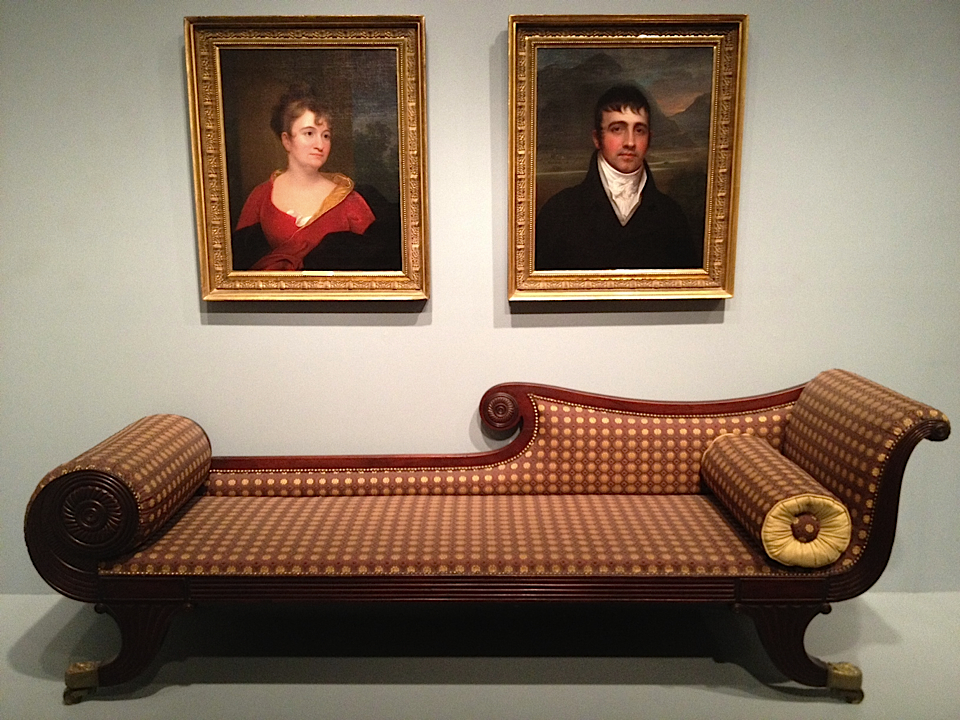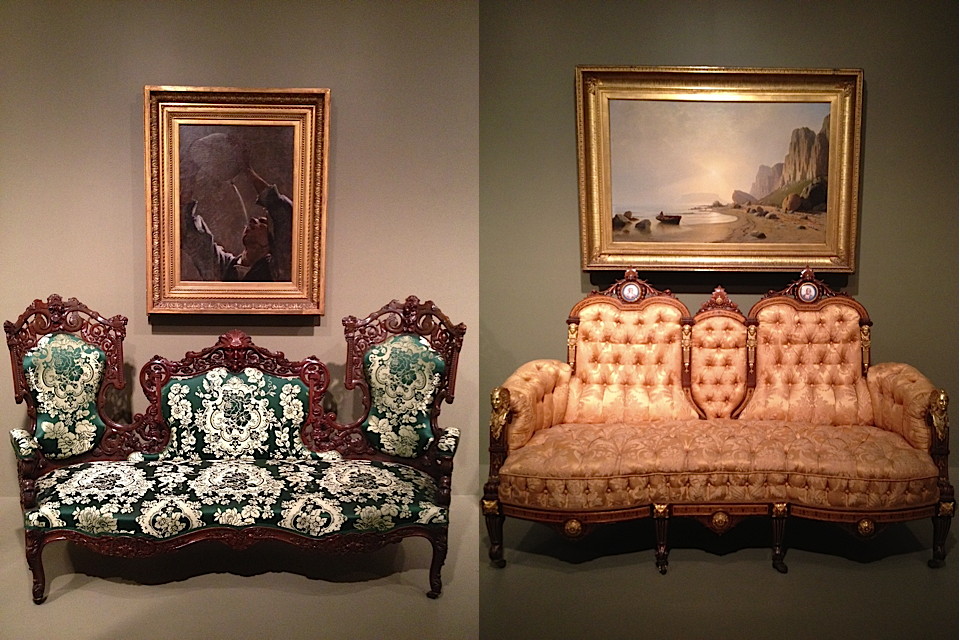US TAB
les sofas un peu bêtes du art institute of chicago

Grecian Couch 1825/40 New Yok or New England - photo by emmanuelle linard
There is something moving in the way these sofas are displayed in the American furniture section of the formidable Art Institute of Chicago. Antique pieces from the East Coast, crafted somewhere from 1825 through 1870 in New York or maybe New England it is unclear, all sitting low under a rather odd selection of paintings and portraits hung too close to them.
For one, the Grecian couch with ultra symmetrical woven dots from the 1830s invites the two overlooking portraits, an endearing gentlewoman and a romantic dandy in matching colors, to roll up the conversation onto the wavy shapes below. A not so conventional sectional.
Then there is the chubby pink 1860s sofa with a triptych backseat, ornate with cameos of Her and of Him at its tips, which claims to be made of rosewood and … ormolu. Ormolu? Sounds like the name of some fancy bird that could drop any minute straight from the William Bradford marine “The Coast of Labrador” onto the arms of the couch. But no, ormolu is an old English translation from French “or moulu”, or ground gold, an 18th century term describing the application of gold powder as a finish on wood, precious enough like a cocotte…
And finally there is this 1855 complicated laminated rosewood, ash and cherry piece, freshly re-upholstered in a flashy green and white floral damask.
It is flanked on top by the 1881 “Study for an Aragonese Smuggler” painting by William Turner Dannat, chiaroscuro rendering of a man in shabby clothes with raised arms throwing his head back and pouring water in his open mouth.The painting is as tormented as the couch is still, as patine-d as the couch is plastic, as low-life as the couch is high life. One volunteers for humble and the other screeches pretense.One tells a story of realistically neo-poor and the other of ostentatiously nouveau-riche. How can two objects be more aesthetically opposed to each other. Yet somehow the odd tandem works, kind of creating an occupy wall street design moment. Or like an old rich lady and her much younger artistic lover, sofa and painting make strange but interesting bed fellows.
This inspires us to spark again at the visit of the forgotten furniture aisles of musea, those long shielded from the scrutinizing eyes of curators. These aisles subsist all over the world indeed, in major art establishments as well as in regional museums. Oscar Wilde himself, in his desire to educate North Americans to a House more Beautiful, would have liked the incongruous associations, I’m sure. I appreciate the naïveté and the randomness maybe of the display. A non-curated anthropological manifesto.
Emmanuelle Linard

Sofa 1855/65 New York - Sofa 1860/70, New York rosewood & amp ormolu - photos emmanuelle linard

